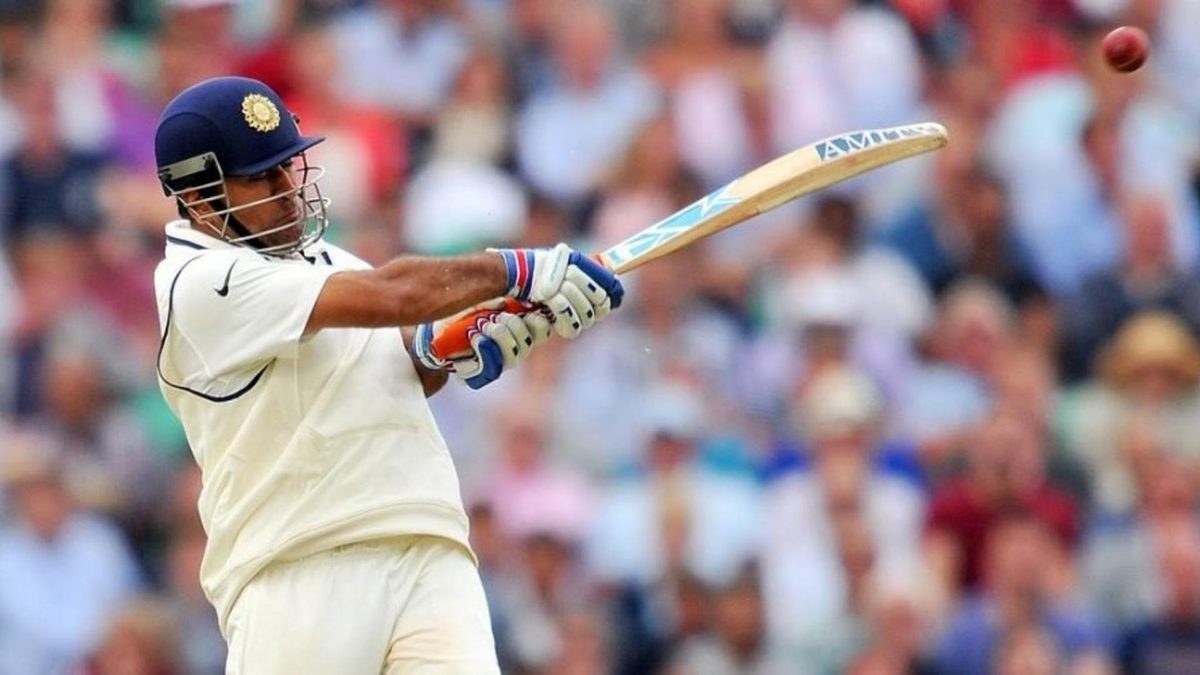
The floundering fortunes of India’s current middle order make Aadya Sharma wonder if MS Dhoni, the Test cricketer, didn’t get enough credit for grinding his way to scores on challenging pitches in England.
A touring batsman in England invariably meets the daunting challenge of tightening up their technique to counter the seam and swing on offer. Some of the world’s very best have seen their egos and techniques dismantled by the moving Dukes cherry, with discussions often boiling down to how technically adept, or inept, a batsman is.
And so, when the touring Indian batsmen, currently visiting England, have been found wanting on occasion, experts have cracked open each technique and spelt out numerous reasons for their poor form. Someone’s head is not aligned, the trigger movement has changed, the back foot is not in place, et cetera, et cetera. It almost makes you wonder if unorthodoxy has any space to flourish in the UK.
While remembering such struggles, the mind goes back to when India possessed MS Dhoni in their middle order, a man whose batting career was built on nonconformism and ingenuity. Dhoni wasn’t close to being a Test great, but he had his own ways of making things work, including three fruitful tours of England where you would have expected conditions to split open his technique.
Often, the perception around Dhoni, the Test batsman, revolved around his sub-par performances abroad – when Rishabh Pant blasted centuries in both England and Australia, you were suddenly reminded that Dhoni never scored a century outside Asia in 39 Test outside of the continent.
It isn’t as commonly known, though, that Dhoni’s tally of eight fifty-plus scores in England is bettered only by Shivnarine Chanderpaul, Michael Clarke and Steve Smith when it comes to visiting middle-order batsmen (Nos. 4-7) this century. From his debut until his Test retirement, only three more batsmen (Clarke, Chanderpaul and Kumar Sangakkara) faced more deliveries in England than him.
Dhoni batted at No.6 and No.7 in 85 of his 114 Test innings – only three batsmen have scored more runs at a better average than him this century at No.7 (2,871 runs @ 30.54). The runs were hardly ever beautiful, but even with a somewhat ungainly approach, Dhoni provided India with muscle down the order.
In his very first Test in England, in 2007, Dhoni was immediately pressed into action, batting 159 deliveries for an unbeaten, fourth-innings 76 to secure a draw. The side had stumbled to 145-5 in their chase of 380, but Dhoni’s grit ensured that he batted with the tail (and five overs with the No.11) to push for the match-saving result.
Two Tests later, he scored a fine 92, but most of the applause went to the unlikely centurion of the innings – Anil Kumble. He ended the series – won India won 1-0 – with an average of 52.25, better than any of India’s top six.
Four years later, Dhoni was in the eye of the storm when India’s tour of England turned from bad to worse with each passing Test. Amid the ruins, Dhoni stuck it out in the middle, using his malleable wrists and heavy bottom-handed approach to wriggle his way to two fifties in the Edgbaston Test, counter-attacking against the English attack after most of the top order had capitulated.
Then, on the 2014 tour, Dhoni ended as the side’s second-highest run-getter, behind only opener Murali Vijay. In the first Test, his 82 at No.6 helped carry on the momentum from Vijay’s century, and he scored three more fifties on the tour, ending with more runs than he every scored in any series (349), home or away. His innings in the fifth Test, at the Oval, was perhaps the best – he scored over 55 per cent of the team’s runs, helping them recover from 44-6 to 148 in the first innings, facing 140 balls for his valiant 82. In the previous Test at Manchester, he had played a similar role, walking in with India on 8-4, and carrying them to 152 with his 71 from No.6. That’s a lot of firefighting for one person.
MS Dhoni will always be remembered as a great white-ball cricketer, and his success in the one-day format stands out among the game’s very best. The Test format was never his, but he slogged his way through the rigour, sometimes literally. He helped India out of a hole on several occasions, battling testing spells in his own way at six or seven, never letting scathing criticism, unflattering statistics, or even his own lumbering style get in the way of the bigger goal. Dhoni’s Test legacy might forever be attached to his failures as captain in 2011/12, his scrappy averages in Australia and South Africa, and his centuryless streaks away from home, but it doesn’t take away his life-saving contributions from down the order in arduous situations. Now, when the Indian middle order crumbles to a string of collective failures in England, and can’t find ways to arrest collapses, India fans may wish they had someone like Dhoni to turn to, a cushion of hope down the order.








